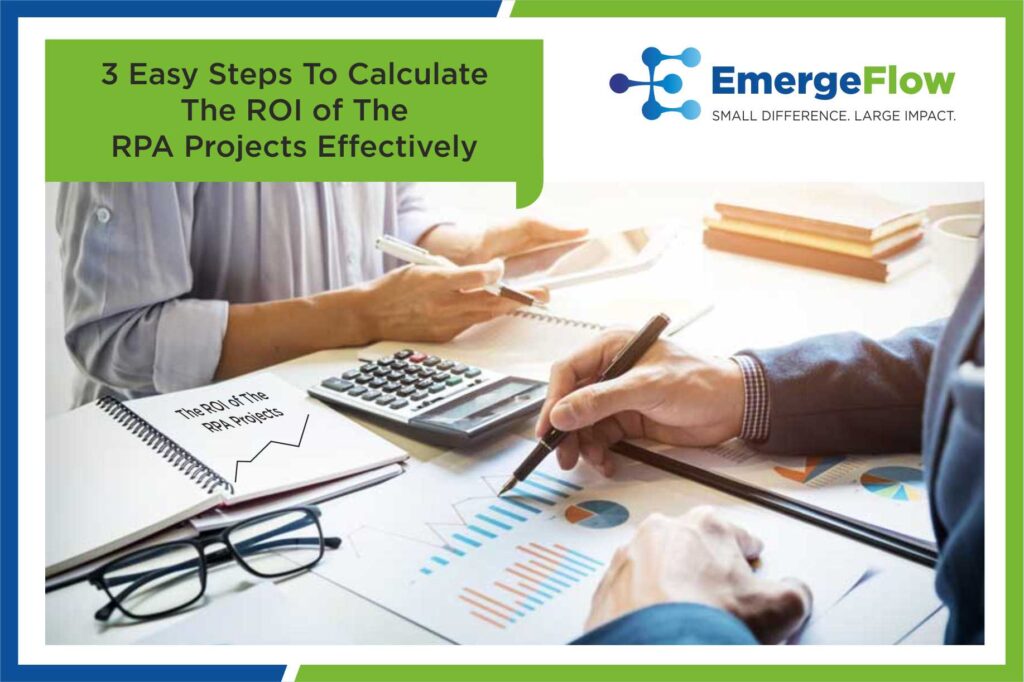Measuring ROI For Effective Implementation and Scaling RPA Efforts

RPA has paved the way for many companies to automate repetitive jobs and remove the hassle of mundane tasks. Since 2019 the adoption rate of RPA boosted by 8%, yet many companies find it difficult to calculate the ROI of these projects. This leads to restricted adoption rates and limits the growth potential of RPA.
Measuring the ROI (return on investment) of RPA automation helps companies justify their investments and analyze the scope of improvement. Moreover, it assists in decision-making about investing more or less into RPA. No company invests more if they don’t get desired results. So, if they wish to improve and scale RPA to its maximum potential, they need to measure its ROI.
However, businesses either don’t measure the ROI or opt for a faulty mechanism which leads to misleading information. Many companies get away with it due to the added cost and resources required. Apart from this, calculating the ROI of RPA is difficult due to indirect and miscellaneous costs, which companies often tend to ignore. Moreover, RPA offers many intangible benefits which are hard to account for.
RPA’s cost and benefits are indirect and require the companies to account for unaccountable. But, following a proper framework that includes all the indirect, intangible, and miscellaneous costs and gains, can be effective. It will give a true picture of the real yields for the business.
Here’s a 3-step framework to calculate the ROI of RPA projects, which is comprehensive and gives a true number for the benefits leveraged.
The process to Measure the ROI of RPA
The ROI measuring process is a simple 3-step procedure that includes setting goals, deciding scope, defining KPIs, finding estimates, and finally calculating the ROI. Many companies make an error while finding estimates due to indirect and miscellaneous costs. But, we will address in further sections how to ensure no errors and get a true ROI for your RPA projects.
#1 State The Automation Goals and Scope
- Automate rule-based structured tasks
- Choose tasks that are mundane and time-consuming; you don’t want to spend millions to save thousands
- Opt for jobs that deal with standard, readable, and structured data
- Pick tasks with high-value low complexity, especially when starting out
#2 Pick KPIs
Different stakeholders have different priorities. Hence, deciding top 3 or 5 KPIs is crucial that cater to the needs of all the stakeholders. Some of the top KPIs (key performance indicators) opted by businesses are:-
- Reduce labor costs
- Increase accuracy
- Save time
- Enhance the RPA implementation time
- Improve customer and employee satisfaction
- Minimize business downtime
Based on your goals, you can define specific metrics and KPIs to measure them. For instance, in regards to automating the ticketing process, KPIs could reduce hours on segmentation, increase the number of tickets resolved, and improve customer satisfaction.





